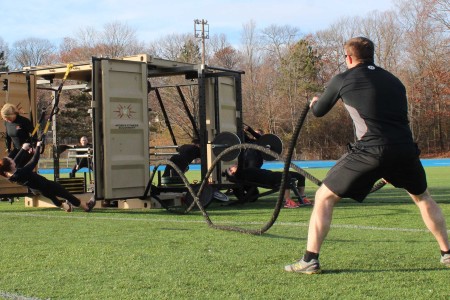Winter 2023
3 reasons to opt for fabric training structures
Fabric structures have been rapidly becoming the preferred building style for several different industries and operations, including the tactical fitness industry.
Fabric structures use durable covers that are pulled over an entire building, depending on the size, or quickly installed in panels. There are no screws or punctures to the roof while installing it.
Unlike conventional buildings, the fabric cover has non-conductive properties that reduce the transmission of heat and cold, making the building feel warmer in the winter and cooler in the summer. The translucent properties of the fabric covers allow natural daylight into the building, reducing or eliminating daytime lighting costs, and creating safe environments for occupants, according to Brightspan Building Solutions.
They can be used as portable or long-term storage centers or be utilized to train tactical athletes for operational or personal use. The possibilities are endless if you want to get creative with the structure and its use.
Below are three reasons to opt for a fabric tactical training structure.
- Ventilation — Fabric structures feature a high roof design which results in a large volume of interior air space. They can also be used in warmer climates as open-air structures.
But they also have the options of side ventilation, end wall ventilation, and roof ventilation. Warm moist air, including odors, can easily be vented from buildings. Ventilation and heating/cooling systems are easy to install and manage.

- Portability and Temporary Options — Fabric structures are extremely versatile, making them ideal for temporary or portable facilities. Flexible foundation options allow the option to take down and move or store them until they are needed again.
Fabric structures are the best option for portable buildings and temporary storage.
In addition, these types of foundations create little to no environmental impact. If you decide to move from the current building location to another, the site the building was constructed on can easily return to its original state.
- Construction Time — Pre-engineered fabric buildings are ready to be shipped unless the building is a custom design. This allows a fabric structure to be erected in weeks instead of months. You can move into the building quickly, with minimal interruptions to daily operations. Choosing a fabric structure also reduces the costs associated with constructing the building.
They are often installed in weeks rather than months, reducing revenue loss from operating downtime.
» ALSO SEE: NH Police Chiefs Ask to Drop Required Fitness Test
Wood and steel buildings tend to have a labor-intensive construction process. Steel buildings can be costly, difficult to ship to remote areas, time-consuming to construct, and essentially permanent structures. Fabric structures can be engineered as permanent buildings and are also easily erected in remote areas because of their design.



